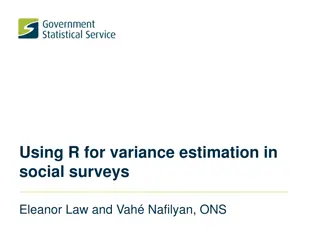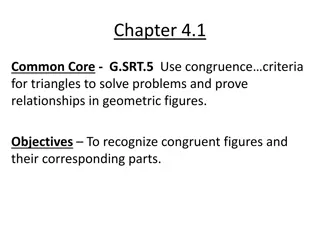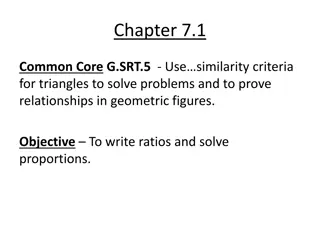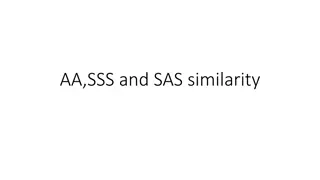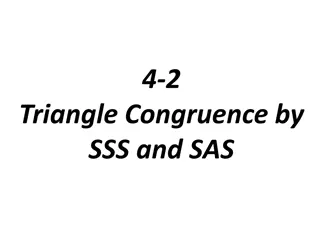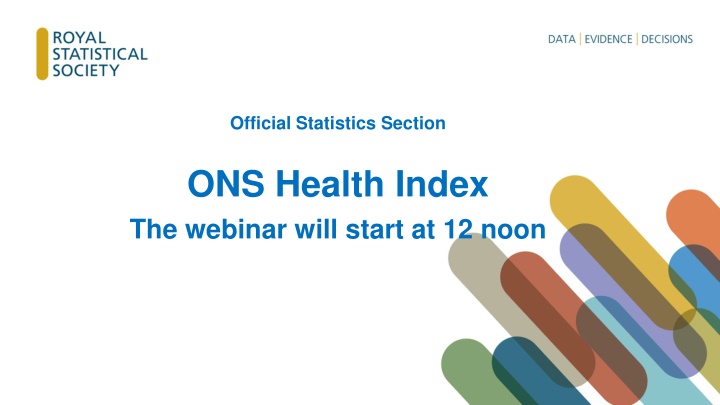
Health Index and Data Visualization in Official Statistics Webinar
Join the Official Statistics Section webinar to learn about the Health Index for England, its methodology, and data visualization. Discover the origins of the index, existing sources of health data, and accepted indices like FTSE 100 and GDP Human Capital Index. Explore how the Health Index enables measuring health impacts and identifying areas for improvement across various sectors.
Download Presentation

Please find below an Image/Link to download the presentation.
The content on the website is provided AS IS for your information and personal use only. It may not be sold, licensed, or shared on other websites without obtaining consent from the author. If you encounter any issues during the download, it is possible that the publisher has removed the file from their server.
You are allowed to download the files provided on this website for personal or commercial use, subject to the condition that they are used lawfully. All files are the property of their respective owners.
The content on the website is provided AS IS for your information and personal use only. It may not be sold, licensed, or shared on other websites without obtaining consent from the author.
E N D
Presentation Transcript
Official Statistics Section ONS Health Index The webinar will start at 12 noon
Official Statistics Section ONS Health Index February 11 2021, 12.00-1.30pm
3 Page Housekeeping All participants, apart from speakers, will be muted during the webinar Questions can be submitted via chat. Please put QUESTION at the start, and the speaker to which this is directed. No photos or screenshots please. All presentations will be available afterwards. A recording of the session will be available on the RSS web site
4 Page Speakers Myer Glickman, Office for National Statistics Greg Ceely, Office for National Statistics
5 Page Health Index for England (beta) Introduction to the Health Index and its purposes Methodology and data visualisation Next steps, and questions for you
6 Page Introduction to the Health Index and its purposes
7 Page Origins Dame Sally Davies 2018 annual report: Health 2040 Better Health Within Reach. We need to track progress in improving health and health outcomes, to and beyond 2040 with a new composite health index that reflects the multi-faceted determinants of the population s health and equity in support of ensuring health is recognised and treated as one of our nation s primary assets. This index should be considered by Government alongside GDP and the Measuring National Well- being programme. a composite index that is inclusive of health outcome measures, modifiable risk factors and the social determinants of health
8 Page Existing sources of health data Public Health England s Fingertips tool
9 Page Existing accepted indices FTSE 100 GDP Human Capital Index https://en.wikipedia.org/wiki/FTSE_100_Index#/m edia/File:FTSE_100_index_chart_since_1984.png
10 Page Analysis a Health Index enables Media and general public Present and see headline measures as indicators of change and inequality Policymakers in government and local government Clearly identify areas for improvement Measure health impacts consistently in policy appraisal Other analysts: academics, think tanks, VCSOs Improves the body of evidence on different aspects of health
11 Page Developing the Health Index Expert Advisory Group featuring central and local government officials, academics and health-related organisations Streamlined advisory group organised for development of the beta Health Index
12 Page Definition of health, and structure
Page 13 Methodology and data visualisation
14 Page Data selection Review of data landscape across concepts within definition of health Data inclusion principles: Allows time series 2015-2018 Clear direction of health improvement (incidence versus prevalence) Can be disaggregated to UTLA level Measuring health rather than health services For beta, publicly available data only due to time constraints 58 indicators total in the beta version
15 Page Methodology and weighting Limited methods for weighting and scaling data for a composite index which needs to: Have a national figure that can be tracked over time Have scores for lower geographies which can be compared to the national figure and to other geographies, both in relative and absolute terms Allow relative and absolute changes in those lower geographies scores to be trackable over time
16 Page Methodology and weighting Imputation, then normalisation, then standardisation For the beta, each domain represents 1/3 of the total Index score. All subdomains have the same weight within each domain Division of indicators into subdomains, and weights for indicators within subdomains, informed by factor analysis Aggregated to England values using population size
Page 17 Mortality Well-being Life satisfaction Healthy life expectancy Feeling of worthwhileness Avoidable deaths Happiness Infant mortality Anxiety Physical health conditions Dementia Mental health Musculoskeletal conditions Suicide Respiratory conditions Depression Cardiovascular conditions Self harm in young people Cancer Chronic kidney disease Other Physical impairment Diabetes Disability Children with social, emotional and mental health needs Difficulty completing Activities of Daily Living (ADLs) Other mental health conditions Frailty
Page 18 Mortality Weights Healthy life expectancy 38.5% Well-being Weights Avoidable deaths 42.3% Life satisfaction 29.6% Infant mortality 19.2% Feeling of worthwhileness 27.5% Physical health conditions Weights Happiness 26.3% Dementia 17.2% Anxiety 16.5% Musculoskeletal conditions 13.6% Respiratory conditions 17.5% Cardiovascular conditions 19.2% Cancer 16.5% Mental health Weights Chronic kidney disease 15.9% Suicide 24.9% Depression 29.3% Physical impairment Weights Self harm in young people 45.7% Disability 34.5% Difficulty completing Activities of Daily Living (ADLs) 41.4% Frailty 24.1%
Page 19 Domains and subdomains Healthy People Healthy Lives Healthy Places Mortality Physical health conditions Difficulties in daily life Personal wellbeing Mental health Access to green space Physiological risk factors Behavioural risk factors Unemployment Local environment Access to housing Access to services Crime Working conditions Risk factors for children Children and young people s education Protective measures
20 Page Outputs ONS website: Article explaining the Health Index purpose, structure and findings from the beta (England, 2015-2018), with interactive time series and map graphics Blog introducing the statistic, its purpose and its future Technical report detailing methodology and data selected Data on the index, each domain, sub-domain and indicator at national and UTLA level Lane Clark Peacock LLP: Interactive web tool for visualising the index Citizen Space: Public consultation questionnaire on index use, value and recommendations for improvement Consultation document: concise summary for lay users outlining aims and structure; comprehensive annex detailing methods and data (including those not chosen and why)
21 Page LCP s Health Index Explorer https://healthindex.lcp.uk.com
Page 22 Next steps, and questions for you
23 Page Next (and current) steps 3rd Dec 2020 Health Index beta release LCP explorer tool release Consultation launched By 26th May 2021 Summary of consultation responses published 3rd Mar 2021 Consultation closes June/July 2021 Full Health Index released Early Health Projections model released for iterative development Longer term: Health Index UK, and international applications of Health Index framework Exploration of more frequent Health Index updates
24 Page Key questions 1. What do you think of the concept of a health index? 2. How likely are you to use the Health Index for your own analysis? 3. Which elements of its structure, data and content, or methodology could improve for you to be more likely to use it? 4. How would you want others to use the Health Index? 5. Would you be interested in a Health Index for lower geographies, or more frequently than annual, at the expense of some indicators?
25 Page Thank you for attending The slides and other material will be placed on the Official Statistics Section s page on the RSS web site ONS consultation closes March 3 Please respond with your views






